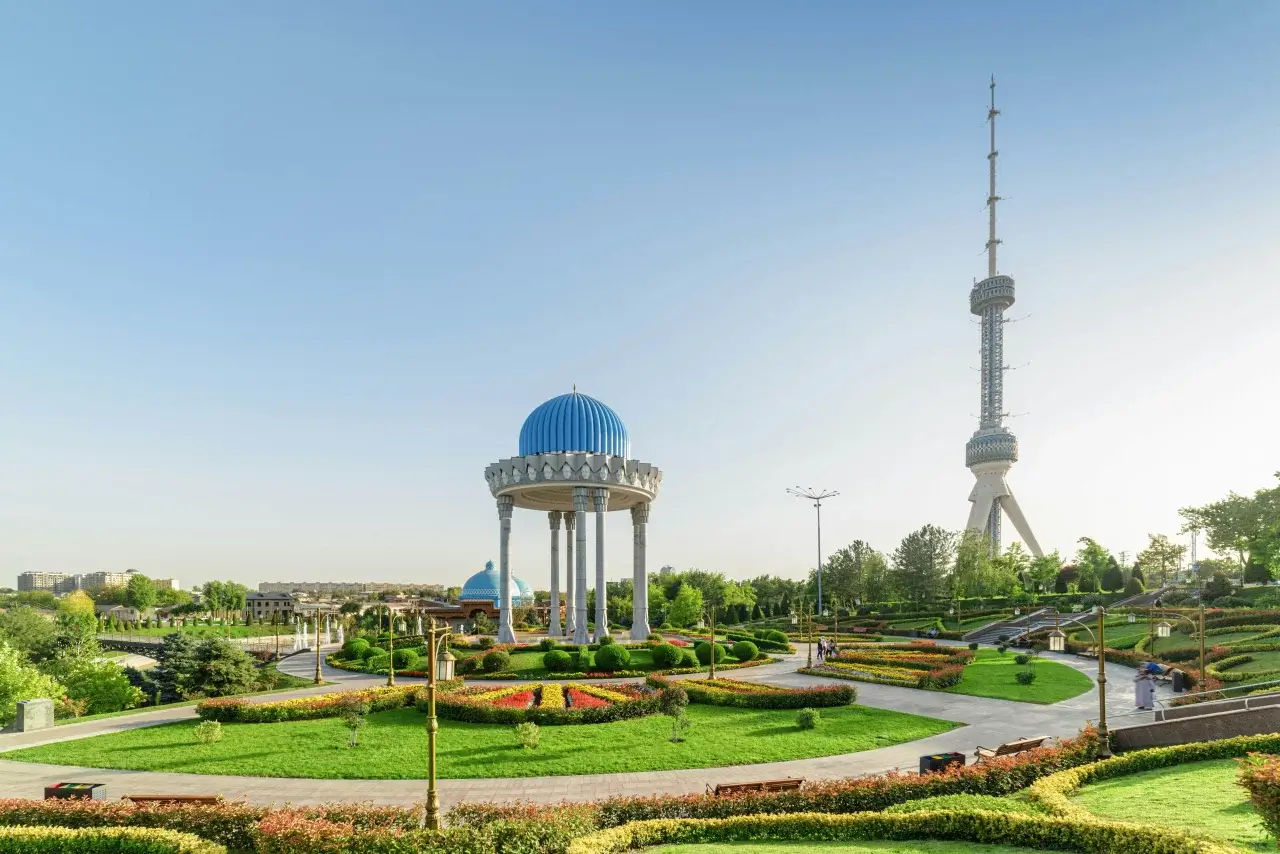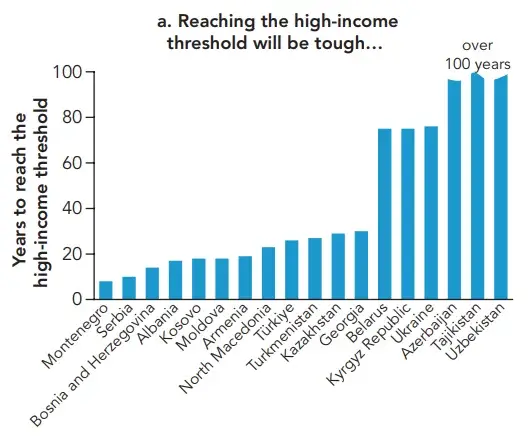
The World Bank has published a report on Europe and Central Asia titled “Accelerating Growth through Entrepreneurship, Technology, and Innovation.” It includes forecasts on how long it will take developing countries in the region to reach the high-income threshold in terms of per capita income.
Forecasts and figures
The World Bank set the 2023 high-income threshold at $14,005 per capita income. According to the estimates, Kazakhstan and Turkmenistan will reach this level in 40 years, Kyrgyzstan in 70 years, while Uzbekistan and Tajikistan may take more than 100 years to achieve it.

Economist Mirkomil Kholboev noted that the forecasts are based on the average growth rate over the past 10 years, influenced by the pandemic downturn and early-period recessions in Kazakhstan and Kyrgyzstan. Based on post-pandemic growth rates, he calculated that Kazakhstan could surpass the $14,000 mark as early as 2026, Turkmenistan by 2034, Tajikistan by 2037, and Uzbekistan by 2042.
Current situation and income dynamics
In 2024, Uzbekistan’s total population income reached 896.3 trillion soums, representing 18.5% nominal growth and 8.1% real growth (adjusted for inflation). Per capita income rose from 20 million soums to 24.1 million soums (about 2 million soums per month). At an average exchange rate of 12,500 soums per US dollar, this equates to around $1,600–$1,900.
Other key points from the World Bank report
Uzbekistan’s economic growth is projected at around 5.9% in both 2025 and 2026.
In 2024, personal remittances from Russia to Uzbekistan increased by 30% to nearly $15 billion.
Remittances make up a significant share of GDP: nearly 40% in Tajikistan, over 20% in Kyrgyzstan, and about 18% in Kosovo. The regional average is 7%.
Without remittances, Uzbekistan’s poverty rate would be twice as high.
Uzbekistan ranks 10th in the world for the volume of remittances received from abroad.
In 2024, the budget deficit was 3.3% of GDP, largely due to cuts in energy subsidies.
Conclusion
The report highlights that Uzbekistan requires long-term and consistent economic reforms to join the ranks of high-income countries. Maintaining strong growth rates, expanding export potential, and investing in innovation will be key factors in achieving this goal.
Read “Zamin” on Telegram!Users of Меҳмон are not allowed to comment this publication.






















